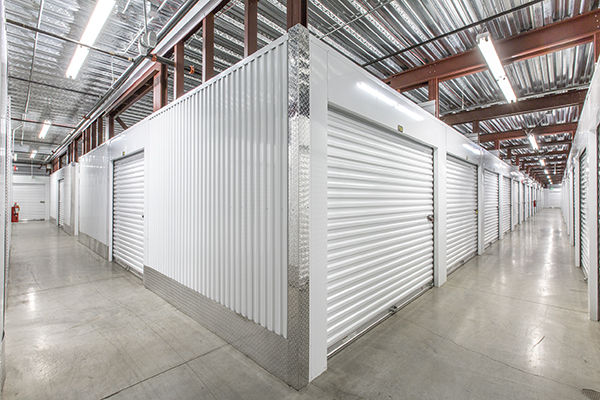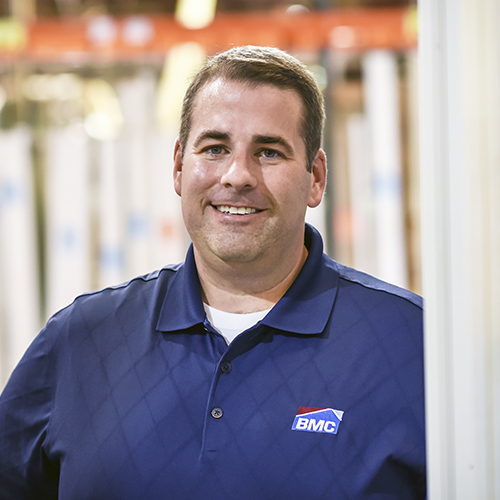A young couple gets married and moves into an apartment together. A year later, they have a child. They put some of their furniture into a self-storage unit, making way for a crib, changing table, and whatever else their baby needs. As the child gets older, the parents put the crib and changing table in storage, then move some of their furniture back into the apartment. The child goes to college and moves some of their possessions into their parents’ storage unit while they’re away at school. The child—now an adult—eventually get married themselves, and once a new baby arrives, they rent their own self-storage unit. The cycle begins again.
If a filmmaker were to stand in the lobby of a Life Storage facility and somehow keep their camera rolling for forty or so years, this is exactly what they’d see: as the business name implies: a life.
Eric Sweet, the organization’s vice president of construction, tells me that’s exactly why the company chose the new name Life Storage in 2016. Originally known as Uncle Bob’s Self Storage, it now has a moniker that preserves the down-home, family-first nature of the old name, while also broadening the scope of the brand.

“We always put our customers first and understand that we’re dealing with peoples’ personal possessions that have high value,” says Sweet, who oversees construction management at more than seven hundred Life Storage facilities. “Whether that value is monetary or has emotional ties, it’s our job to protect it.”
In August 2017, that job became even more important when Hurricane Harvey touched down in the metropolitan areas of Beaumont and Houston, Texas. Not only did Life Storage have twenty employees whose homes and lives would eventually be affected by the storm—the company has sixty-nine facilities in the Beaumont/Houston area. The goal was to get all of those properties open and running as soon as possible after the massive flooding the storm caused. In addition, there were two expansion projects under construction that weren’t scheduled to open until a later date. Sweet and his team knew it was important to accelerate the construction process and give people more space for protecting their valuables.
To accomplish such a challenging feat, a call for a response team went out to Life Storage’s 1,600 employees across the country. Ninety-three immediately volunteered to travel to Texas, and of those ninety-three, Life Storage sent sixty to the Lone Star state to put boots on the ground.

First, Life Storage put up its Houston/Beaumont employees and their families affected by the storm in hotels or apartments, ensuring that they would stay safe. Next, the operations team dispatched its store managers and area managers to the six flooded facilities that were not open.
“Typically, an area manager oversees fifteen or twenty stores,” Sweet says. “But we were assigning area managers specifically to work side by side with store managers on many selected properties. Having that many people down there, we were able to move quickly through all the hurdles and wait for the flooding to subside.” As the weather calmed, Life Storage’s marketing department hustled to update the company’s website and get the word out to the community, making sure customers knew exactly which facilities would be open and have available storage.
One of the bigger challenges for Life Storage during the Harvey relief efforts was expediting the completion of the expansion projects.

“It was joint work between local municipalities and our construction project managers that allowed us to get multiple buildings finished very quickly,” Sweet says. “We were able to get a temporary certificate of occupancy to open parts of the buildings.” Once the operations team established management to preside over the day-to-day function of the stores, they were ready to open. One new building was operational within one week of the storm, ultimately supplying close to 50,000 square feet of storage. The other newly completed expansion projects also helped meet the needs of the community. Operations and construction management worked together to make sure Life Storage was ready to meet the extraordinary demand for dry, clean, and climate-controlled storage. Life Storage’s marketing department and customer care representatives made a concentrated effort to let the public know that storage was available, Sweet says. “At one of our new locations, procuring a banner posted on the roadside was enough to get the word out that storage units were available,” he says. “Storage was almost completely occupied in Houston and surrounding areas after the hurricane had hit, and having these new stores ready for occupancy allowed our new customers the security of knowing that their most prized belongings were safe, protected, and dry.”
As a final component to the Harvey efforts, Life Storage’s management started a fund to raise money for the twenty employees who were affected by the storm. The company and its employees leapt into action, collectively contributing over $30,000.

“Our leadership cares, and therefore, our employees care,” Sweet says. “That culture begins at the top. It’s that kind of spirit that mobilized the employees of Life Storage during Hurricane Harvey, and it’s that kind of spirit that will bring them to assist communities during similar tragedies in the future.”
“When any kind of tragedy strikes, we need to be ready,” he says. “Any year, we approach it the same way. We reach out to employees to ensure they are safe, and then to ensure that our facilities are open, running, and available to the community. We uphold the highest degree of community trust and respect. Those are both parts of our core values, and our employees have always lived up to those beliefs.”
A Lifetime of Service
Life Storage’s assistance during Hurricane Harvey is far from the first time Eric Sweet has given back to his community. He began his career in the US Air Force’s Civil Engineer Squadron. His duties took him to Air Force bases in Hawaii, California, and Niagara Falls. Afterward, he earned his associate of science degree in civil engineering and a bachelor of applied science in industrial engineering.
He is also active in community affairs, having served as a member of the Long-Term Fiscal Planning Committee and Board Trustee in his school district; the Buffalo Niagara Construction Permit Reform Task Force; and University Advisory Committees. He was honored with a Collegiate Distinguished Alumni Award and the Air Force Commendation Medal. In the construction world, his various accreditations—including LEED, CCM, CDT, CCCA, ACI, and NICET—have allowed him to work on projects throughout the United States and globally. Notable projects have included Incheon Stadium for the 2002 Korea/Japan World Cup; the $137 million US Federal Courthouse in Buffalo, New York; the Buffalo Niagara International Airport, and the Pentagon Renovation Project.


